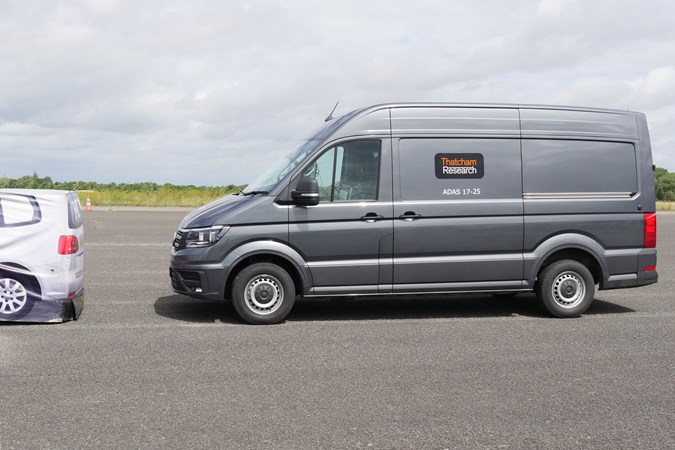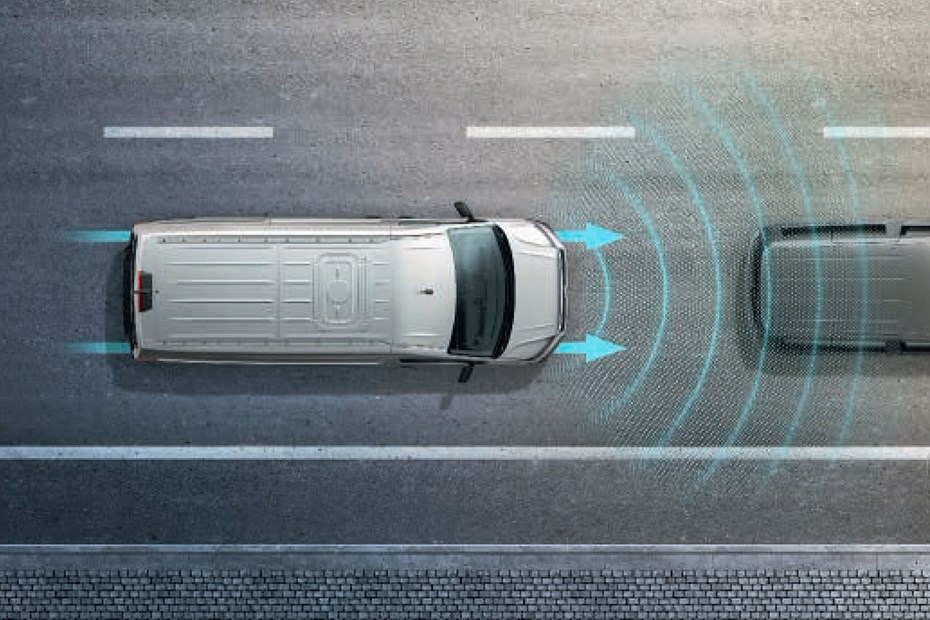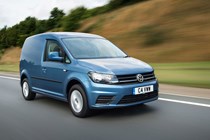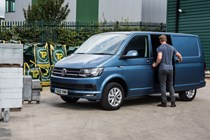In June 2017, Volkswagen Commercial Vehicles became the first van maker to fit autonomous emergency braking (AEB) technology as standard across its entire van range in the UK, and at present it remains the only brand that can boast this.
Now VW is calling for more van manufacturers to follow its lead, as analysis of Department for Transport accident data suggests that AEB tech could prevent almost 2,500 crashes involving vans every year – saving nearly 350 lives in the process.
How does AEB technology on vans work?
AEB works by using sensors built into the front of the vehicle to monitor what’s happening on the road ahead. These then communicate with the vehicle’s other on-board systems to first warn the driver if they may be approaching an obstacle in front too quickly, priming the brakes at the same time; if there’s no reaction from the driver, AEB will then hit the anchors with full power.
And in a modern vehicle, full braking power is mighty indeed.

If speeds are low enough, this may well be enough to prevent any kind of collision at all – but even if that’s not possible the impact will be reduced.
The AEB system fitted to VW vans is split into two parts: Front Assist (which does the monitoring) and City Emergency Braking (which, obviously, does the stopping).
This is one of the older systems, as the emergency braking function only works up to 18mph (hence ‘City’), whereas the latest AEB systems fitted in many cars operate up to much higher speeds.
But the fact remains that VW fits the tech as standard in the UK on all of its vans: Caddy, Transporter and Crafter (the Amarok pickup still misses out, sadly). While many other manufacturers offer AEB on some models, no rival fits it as standard across their every van range.
Could AEB really prevent 2,500 van crashes every year?
VW has looked at the official Department for Transport statistics on accidents in 2016, and specifically those involving front-end impacts where people were killed or seriously injured.
Based on this research it believes that ‘2,496 incidents involving vans weighing up to 3.5 tonnes could have been avoided if autonomous emergency braking systems had been fitted.’ Those same statistics apparently show that 348 deaths and serious injuries could have been prevented.
The stats do consider collisions with pedestrians and cyclists as well as motor vehicles, and not all AEB systems are sophisticated enough to detect people and bicycles – including the version fitted to VW’s vans; following the 2018 facelift, the Ford Transit Custom is available with an AEB system that can do this, as an option.
But again, the point stands: if more vans were fitted with autonomous braking, more accidents could be avoided.
Are there any other benefits to AEB?
Well, it should also make your insurance cheaper.
Fewer accidents means cheaper insurance – no brainer. But VW says its latest Crafter sits four insurance groups lower with AEB fitted than it would do without it.
So there’s a potential running cost benefit to this wizardry as well.
>> Get a van insurance quote via mustard.co.uk
Also read:
>> VW is first van maker to fit autonomous emergency braking as standard
>> Find out more about AEB from the Parkers car glossary
>> Van and pickup speed limits – everything you need to know
Just so you know, we may receive a commission or other compensation from the links on this website - read why you should trust us.










